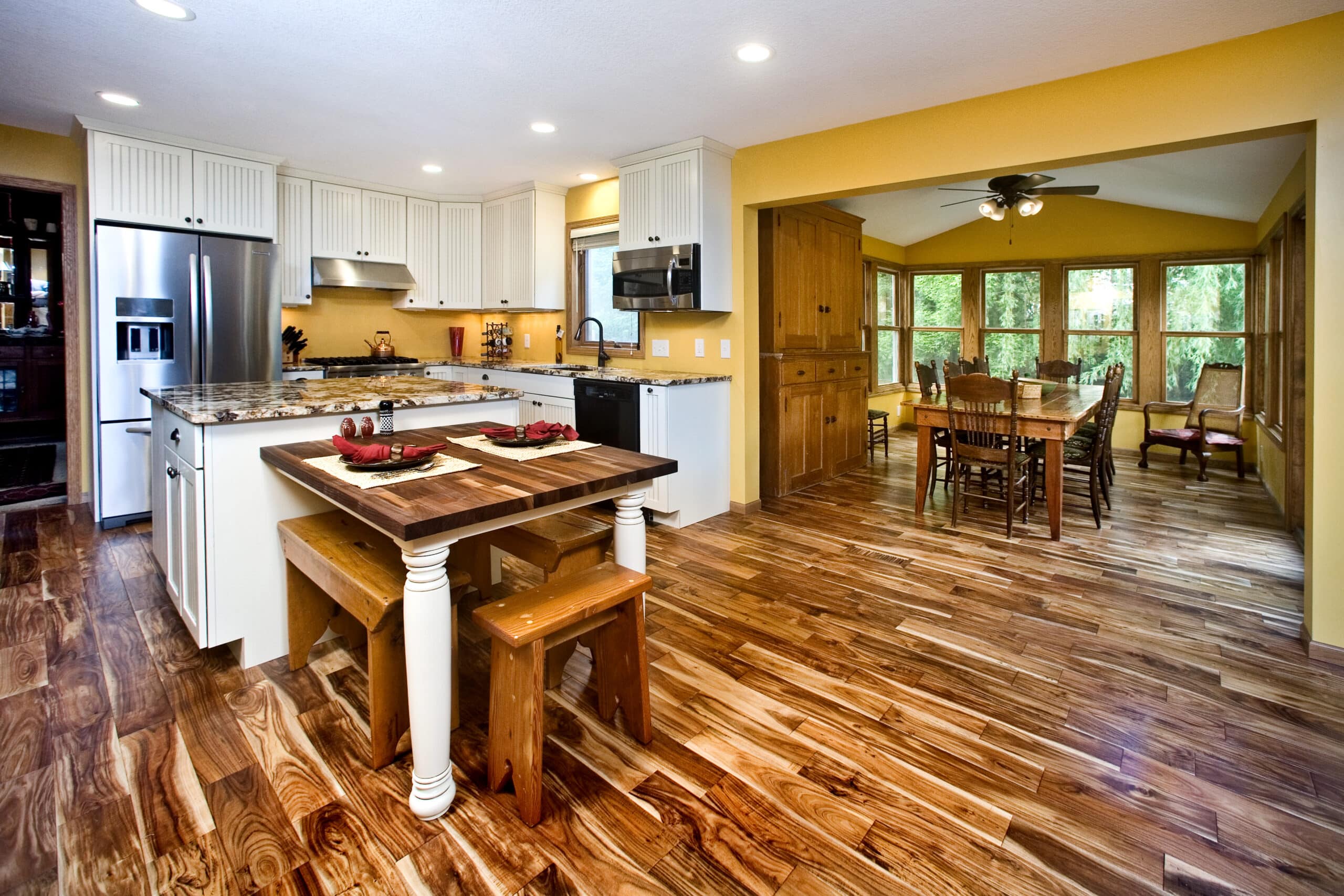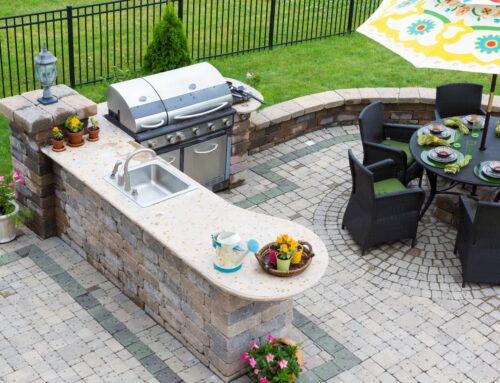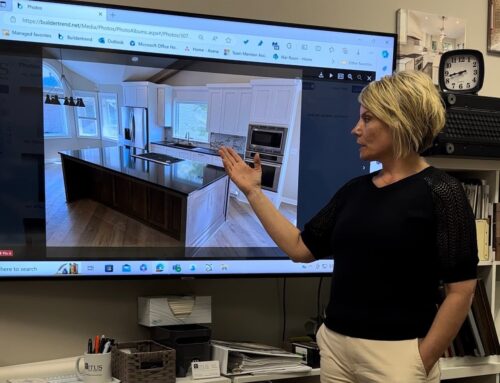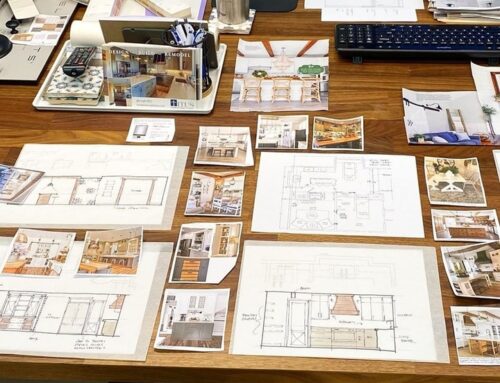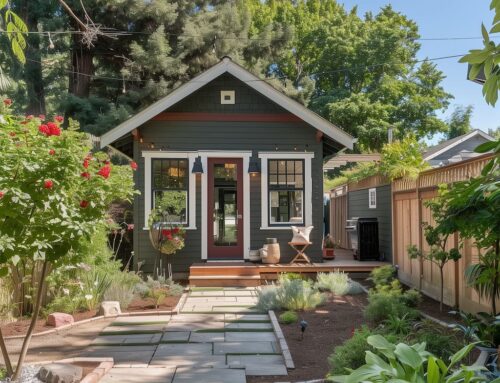If you love a warm and cozy kitchen and enjoy the simple pleasure of cooking at home, a butcher block countertop may be the ideal choice for you. Butcher block is made from individual wood strips fused together into a sleek slab, and is a timeless and trendy material for kitchen countertops. They have been experiencing a boom in popularity in recent decades due to home trends shifting towards more natural and rustic aesthetics.
Butcher block countertops are known for their warm tones and durability, but there is a lot about the surface that homeowners don’t know – including cost, and what type of care they require. Here’s why you should choose butcher block countertops for your kitchen, and how to care for them properly.
Why Butcher Block Countertops?
When you’re building or remodeling a kitchen, you have multiple choices to make in terms of cabinetry, countertops, materials, textures, colors and floor plans. One of the most important decisions will be your countertop surface. Not only are butcher block countertops very durable, but they are also low in cost, have a unique appearance, and have longevity when properly maintained.
Durability
One, if not the biggest benefit, of butcher block countertops is their high level of durability. Butcher block countertops are built to withstand heavy daily use and food preparation. They are gentle on knife blades and are known to be the best surface for bakers to knead, roll, and cut dough.
They are known to have a lifespan of twenty years (or longer, with proper maintenance).
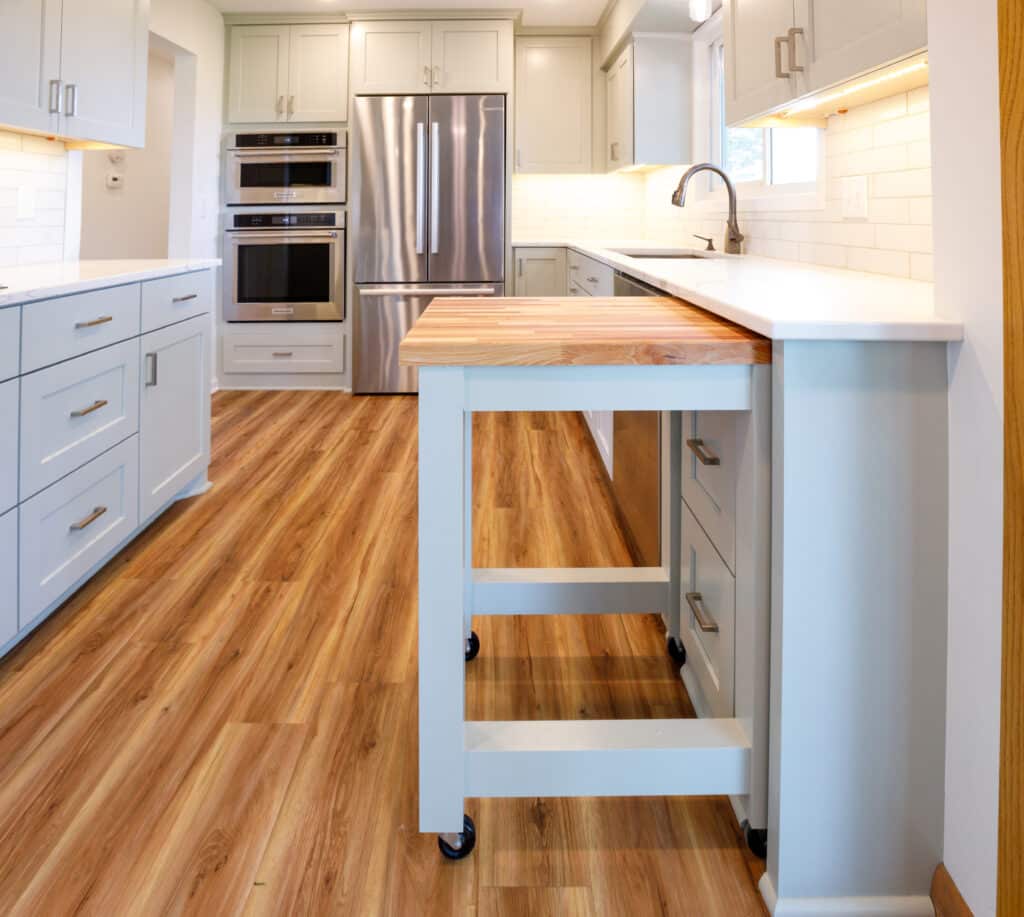
Cost
Another benefit to selecting butcher block countertops is that they will save you a few dimes in your pocket. The average cost of materials runs just $20 to $60 per square foot. Butcher blocks are relatively inexpensive, and will give you a gorgeous look at a far lower cost than what it would take to install a marble or granite countertop.
Style
In addition to their luscious look and warm tones, butcher block countertops can be customized in hue and pattern to get a unique look for your kitchen. You can choose from a variety of hardwoods and wood grains, such as teak, cherry, oak, and blonde bamboo. Our interior design team can help guide you in your decision-making to ensure cohesiveness with other design elements throughout your home.
How the boards are arranged and the different types of adhesive that are used when making butcher block will produce a few different varieties of the material. The three most popular are: edge grain, face grain, and end grain.
Edge Grain
An edge grain countertop is the most common style of butcher block countertop, and is generally the most simple in design and is also the least expensive.
Face Grain
A face grain is used most often in cutting boards versus countertops. Generally, this style is not going to be as durable as the edge or grain styles because of its delicacy and design.
End Grain
This style of butcher block is most commonly used specifically for cutting boards. We think a beautiful kitchen combination would be an edge grain countertop and an end grain cutting board feature for all of your chopping and rolling.
How to Care For Butcher Block Countertops
Just like any other part of your home, a butcher block countertop requires care and maintenance. Caring for your butcher block is much more feasible than you may think.
For proper maintenance, it will be important to regularly clean and disinfect your countertop and remove any grease or grime. It is recommended to use a damp cloth and dish soap to clean the surface and sandpaper can be used to clean any deep stains. Table salt and lemon juice is also a common solution used to resolve stains.
Using mineral oil for proper upkeep of your butcher block countertop will ensure that it is sturdy and beautiful for years to come. It is advisable, though, that any residual quantities of oil left on the countertop should be removed immediately.
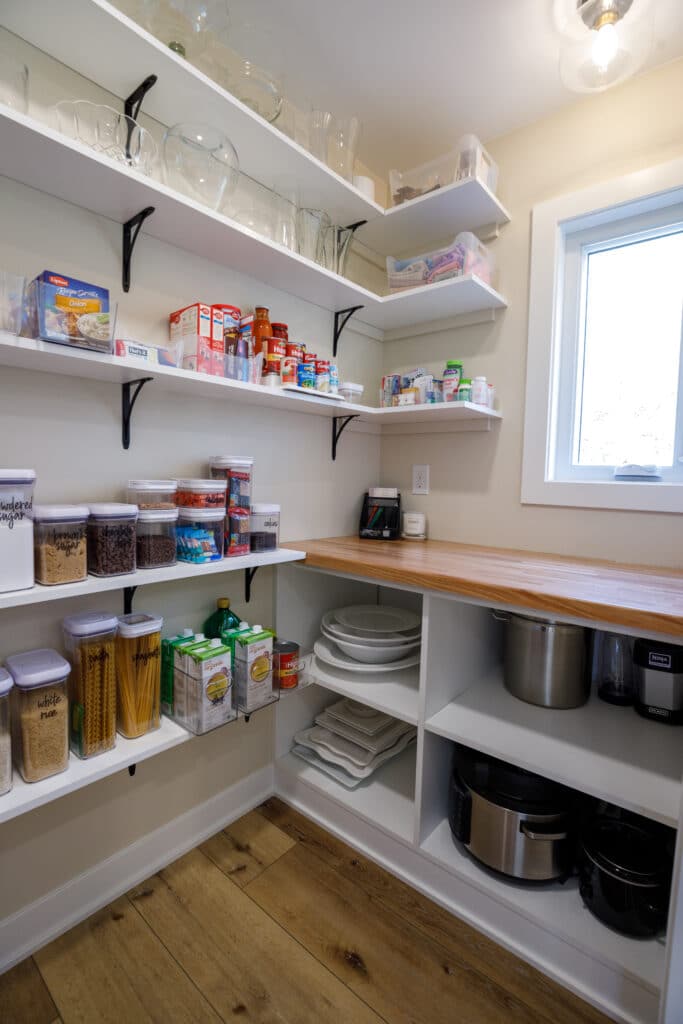
Where Can Butcher Block Countertops Be Used?
Butcher block can be used in your kitchen, mudroom, craft room, and even laundry room. One thing to note, is that when installed over a washer and dryer, the countertop needs to be varnished on all sides to prevent the product from warping as it is a porous and sensitive material.
Receive expert contracting and design guidance to ensure a smooth Minneapolis kitchen renovation
While butcher block countertops require effort to maintain, are susceptible to scratches and damage, we think the advantages of them being uniquely beautiful, cost-effective, and long-lasting would make them a wonderful addition to your kitchen.
At Titus Contracting, we design remodels based on Function, Form, and Feeling. This means we get to work together to create a space that works for your lifestyle and allows you to live comfortably. Kitchen countertops, specifically butcher block countertops, can be a great way to add a little character and warmth to your home while staying within budget and feeling great about your decision.
Our in-house designers are experts on butcher block countertops and all countertop surfaces. We would love to guide you through the remodel process from start to finish. Contact us for a design consultation in the Minneapolis or St. Paul areas.

